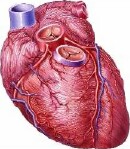
FRIDAY, Feb. 26 (HealthDay News) —
Cutting off the flow of blood to the arm by repeatedly inflating a blood pressure cuff appears to reduce the amount of tissue damaged during a heart attack, a new Danish study shows.
This procedure somehow has a protective effect on heart muscle, by mechanisms that are not yet understood, the researchers said.
In a study of 142 patients being rushed to a hospital for treatment of severe heart attacks, the amount of heart tissue saved for those who got the treatment, called induced ischemia, was 30 percent greater than for those who didn’t, according to a report in the Feb. 27 issue of The Lancet.
“For patients being transported to the hospital for acute myocardial infarction [heart attack], we inflated the blood pressure cuff for five minutes, relaxed it and repeated it four times,” said study author Dr. Hans Erik Botker, a professor of cardiology at Aarhus University Hospital in Skejby.
While the initial results appear promising, induced ischemia is not being used routinely, Botker said. “We have demonstrated cardioprotection by decrease of the infarct [damaged heart muscle],” he explained. “But this is a surrogate marker. The question is whether it translates into clinical benefit for the patient. We have shown improvement during hospitalization, but it was not sustained for more than 30 days. Now, we need to follow more patients for longer times to clarify whether there is clinical benefit.”
The induced ischemia trial is the latest in a long series of studies, first in animals and now in humans, which started with the observation that brief stoppages of blood flow can improve the ability of an organ to withstand stress, Botker said. He and his colleagues have been working with the technique since 2002, with animal experiments followed by trials in people undergoing bypass surgery and now the heart attack trial.
More studies are needed to determine whether the procedure reduces the incidence of congestive heart failure and death, Botker said. “To be honest, we need these clinical endpoints,” he said. “To show that the therapy translates into clinical benefit, that is the next step.”
Most of the work on induced ischemia is being done in Europe. In the United States, a group led by Jacob Vinten-Johansen, a professor of cardiothoracic surgery at Emory University in Atlanta, has been trying a variation on the theme, in which blood flow is interrupted by inflating the balloon on a catheter, the thin wire inserted for the artery-opening procedure called angioplasty.
“We were the first to try it, in 2003,” Vinten-Johansen said. “We did a series of pilot studies simulating models of myocardial infarction. We did find it beneficial and went through the litany of what would be rational and effective. Essentially, in a nutshell, a little bit of ischemia can be helpful and a little bit of reperfusion can be helpful.”
The beauty of the technique is its simplicity, Vinten-Johansen said, but there are complexities within the simplicity. While one small human trial is under way at Emory, “we still are looking at preclinical work, what makes it tick, what are the mechanisms,” he said. “We want to answer some questions about why this thing is doing what it is doing.”
So far, there have been only small human trials of induced ischemia, generally in single medical centers in Europe, Vinten-Johansen said. “The U.S. cardiology community is a bit slower to embrace these things, and the regulatory situation is better in Europe,” he explained.
U.S. regulations require signing of a consent form for such an experimental procedure, “and that is difficult when the patient is in an ambulance coming into the hospital,” said Dr. Ajay J. Kirtane, an interventional cardiologist at New York-Presbyterian Hospital/Columbia Medical Center.
Caution about the technique is advisable because “particularly for patients with acute heart attacks, many interventions have shown promise in single-center trials but have not had the same effect in multi-center trials,” Kirtane said.
But induced ischemia does have appeal, he said. “If you can consistently have the same kind of outcome these doctors have observed, that is pretty exciting,” Kirtane said.
A report in the Feb. 26 online edition of The Lancet described a study led by British researchers that found that surgery to remove blockages in the carotid artery, the main blood vessel to the brain, is safer and better at preventing a stroke than implanting a stent, a thin metal tube, to improve blood flow.
More information
Current heart attack treatments are described by the American Heart Association.

